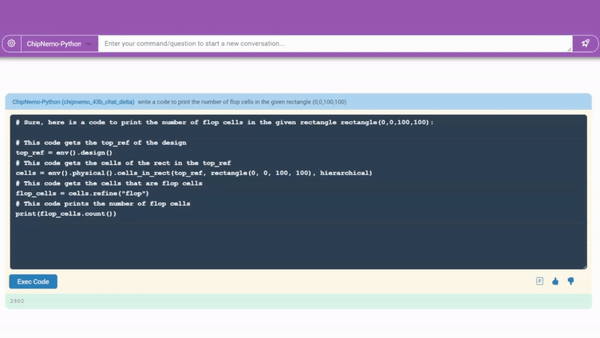
NVIDIA researchers have published a new paper detailing how they are applying advanced AI techniques to help accelerate the complex process of semiconductor design. The paper shows how NVIDIA trained customized large language models on internal chip design data to create AI assistants for their engineers.
Chip design involves coordinating multiple engineering teams over years to plan, test, and construct integrated circuits with billions of transistors packed into tiny spaces. AI-powered assistants have the potential to enhance productivity across the many phases of this intricate process that still relies heavily on human expertise.
“I believe over time large language models will help all the processes, across the board,” said Mark Ren, NVIDIA Research director and lead author, envisioning a wide range of applications.
The paper focuses on an internal model called ChipNeMo, adapted from the open-source LLaMA model. NVIDIA researchers customized LLaMA by training it on 24 billion tokens derived from internal documents, code, and other textual data related to chip design. This advanced “pretraining” tuned the model to understand the nuances of hardware engineering.

The team then “fine-tuned” ChipNeMo on over 1,000 real-world examples of potential assistance applications collected from NVIDIA’s designers. This step aligned the model capabilities to specialized tasks.
They currently implemented ChipNeMo for an engineering chatbot, a tool to generate scripts for circuit design software, and a bug report summarization system. In the chatbot, ChipNeMo fields designer questions by utilizing a retrieval system to search its knowledge base of documentation. In early testing, ChipNeMo’s responses already match simpler baseline models with 5x more parameters.

The work marks an important step in tailoring LLMs to boost productivity for hardware companies. While hype surrounds futuristic AI applications, NVIDIA’s research exemplifies the practical use of language models – combining pretrained foundations with customization for specialized domains.
“This effort marks an important first step in applying LLMs to the complex work of designing semiconductors,” said Bill Dally, NVIDIA chief scientist, highlighting the early progress in an extremely demanding field.
The paper provides a model for adapting AI to professional applications where industry-specific data and expertise are key prerequisites. With intelligent application of models like ChipNeMo, NVIDIA aims to continue pushing the boundaries of AI-assisted chip design.

